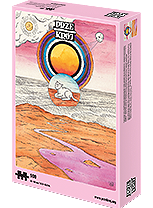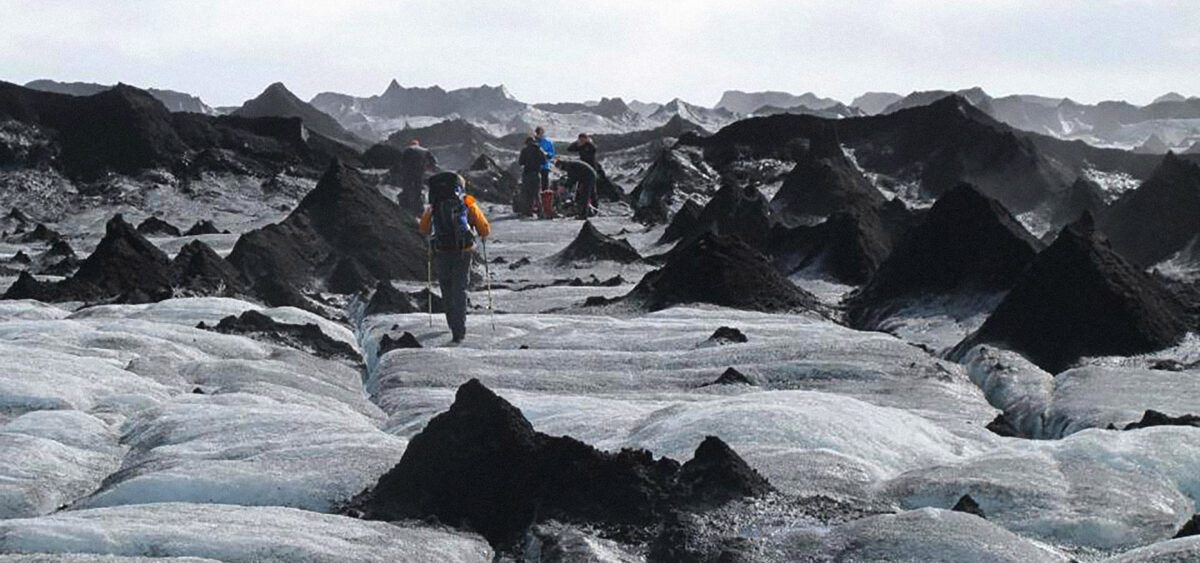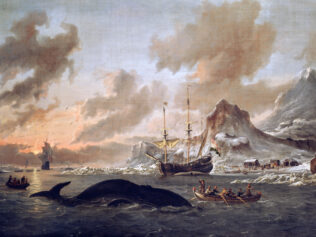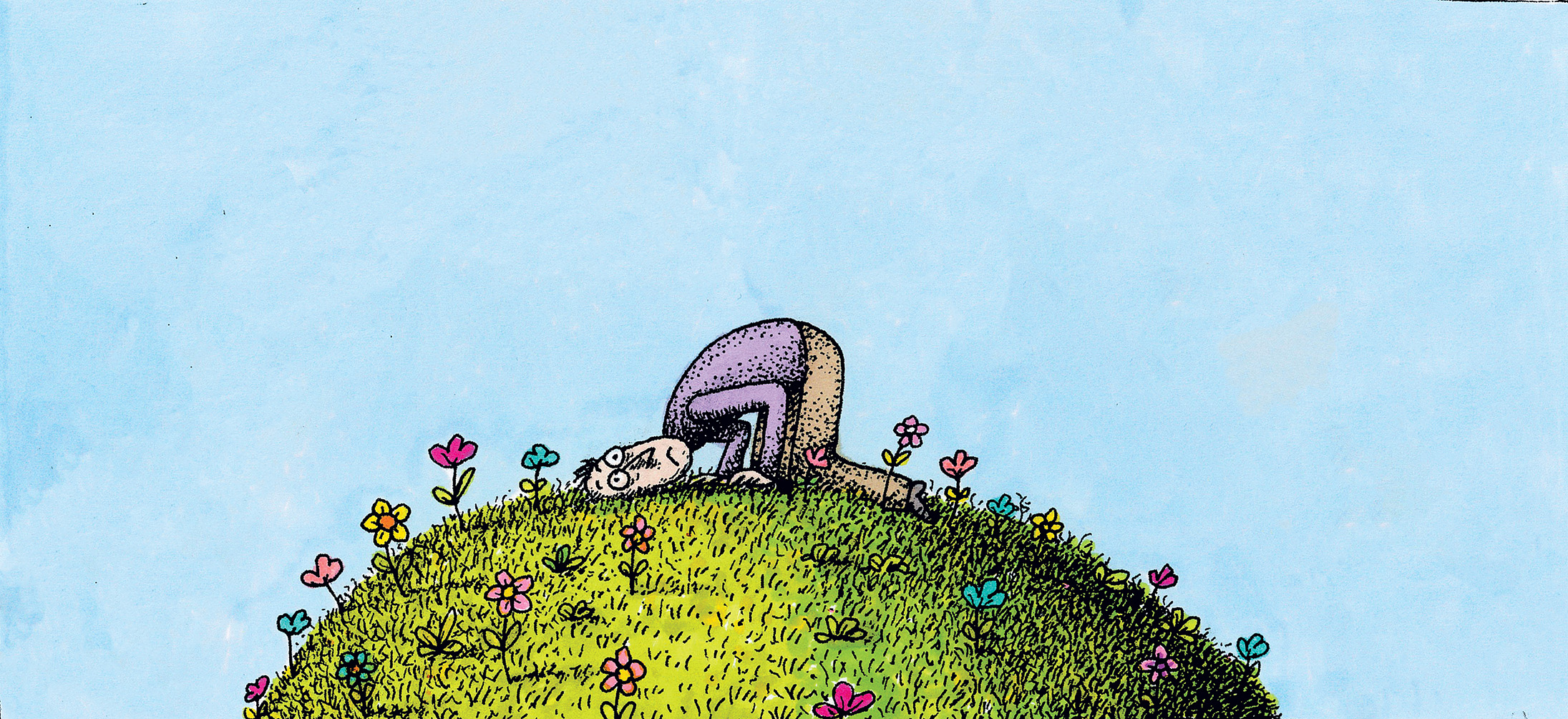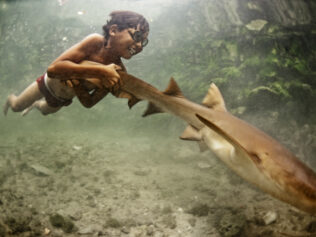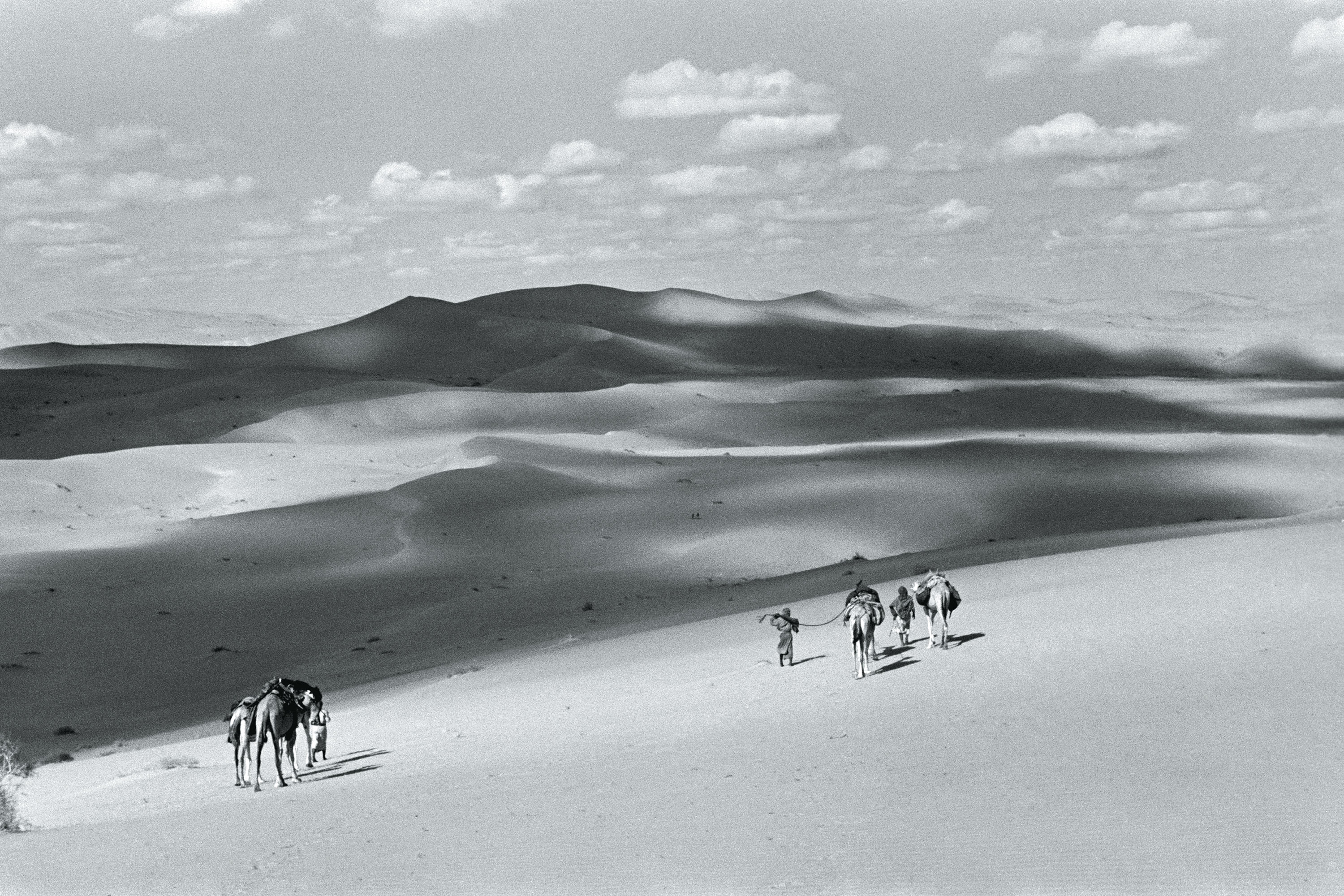
I grew up in America as a child and when we moved home there were many things that struck me visually. There were elements in the landscape that had a deep impact, but I could not put it all into words. There were just these feelings stuck in my mind, and pictures, and things that I only understood much later.
In the north we had a farm by the ocean, just below the Arctic Circle. For many years, I was not sure what defined the nature there so strongly, because the most obvious thing was all the life. It is a place where you can listen to 14 species of birds singing or quacking at the same time. Walking around the beach or the meadows in late June, you have to tread gently: everywhere you will find nests with eggs, or small chicks. This is nature, but it is neither calm nor tranquil. It is as busy as a metropolis; the cliffs full of screaming birds, the meadows full of birds trying to divert you away from their eggs, or Arctic terns coming in swarms to attack you. All these elements resemble life in an obvious way, but a few years ago I found out that it was not life that defined this nature. It was death. The abundance and overwhelming presence of death. In a short walk you would find a dead bird, a dead chick, a half-eaten duck, a dead lamb wriggling with worms, dead fish, an old skeleton of a whale and a seal’s head. And looking closer, skeletons were everywhere, alongside parts of wings. The smell in the air was actually rotting seaweed.
In the sky you would see gliding gulls, threatening the newly hatched birds, swooping down and flying away with the little innocent creatures. This was a culture shock for a child. You would remember that in a park, or the zoo, in a city or on the farm, you would never encounter death or anything dead. So up north, in this harsh nature, you had this overabundance of life, and that which comes with it – overwhelming death. The children would collect the bones and the wings and play with them. Sometimes we would find a weak little bird and try to save it, but it would die in our hands. We would cry a bit and dig a small grave in the animal cemetery behind the farm.
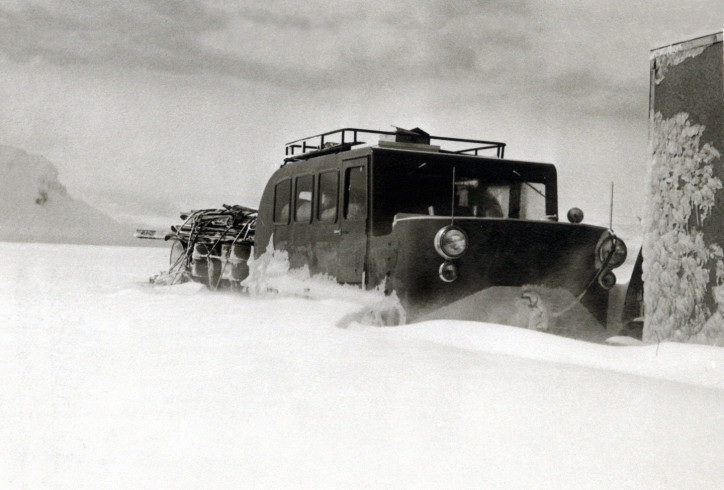
To get up north, we went over the highlands on my father’s Volvo Laplander. We would travel over lava fields covered with green moss. Areas that look like God had only two materials left after she created the Earth: black rock and green moss. This alien landscape would show you that from the scantiest material you could create quite dramatic scenes. And then the moss disappeared, and we would travel through black sands for many hours. The sands looked like some kind of post-apocalyptic landscape, and we would listen to the car radio until we lost touch with any communication.
On one of these journeys north, we were the only car in the black landscape and we came across a geothermal area. We stepped out and walked into the steam and the vivid colours. The ground was full of bubbling holes with yellow sulphur around them. My mother was tense, as just a few weeks ago a traveller had been walking at the same site and had stepped onto a thin crust covering a mud pit. He fell through the crust and was boiled to the bone up to his waist when he was finally pulled up.
In its geothermal areas, our Earth reveals what it is actually made of. We are standing on a thin crust on a ball of boiling magma floating around a burning sun. The geothermal area stands where the tectonic plates meet. It is like a window or a wound on the surface; you can feel the power that moves continents and you can feel the hostility, that you don’t really belong to these areas. The crust can be weak, the ground is too hot to sit on, the muddy boiling pools are like something from Dante’s inferno. Everything seems very lifeless and dead, hostile and grim. But when you look closer, in all the Jupiter-like colours – in all this dead wasteland – you start to see all these traces of life. In a pool of bubbling 100°C water, there are some slime-like formations, and you wonder what kind of life is this that can live there. You wonder if this is how life was perhaps originally formed. Between rocks and in the gravel you find small blades of grass, formations of lichen on hot rocks. Between rocks you find moss and maybe a flower, and when you look even closer, there are flowers everywhere. You wonder where these flowers come from. How can a seed find its way in the short summer, sprout and bloom? Among this apparently dead landscape, you suddenly understand the strength of life. In a forest, life is so obvious, so overwhelming. But not in this landscape, full of sulphur, mud and harmful gases. This life arises in areas where air and earth and water seem not to be fully separated. The steam fills the air and becomes dense as a wall. The ground can be so weak and temporary. The next day it might be a boiling pit of mud. You take careful steps on the ground, trying not to make tracks, understanding the miracle of each blade of grass.
Some of the areas we travelled through had been mapped and named by my grandparents and their friends. For hundreds of years, people saw no point in travelling into these deserted landscapes in the centre of Iceland. It had been vegetated many years earlier, but volcanic eruptions and erosion had created one of the greatest deserts in Europe. What we saw as nature was actually the ruins of something we had never seen. And what our ancestors saw as destruction became land that we loved and cherished.
•
In May 1956, my grandparents went on an unusual honeymoon. They got married on a Friday, packed their bags the same evening, and went on a four-week glacial trip to measure and map the no man’s land of Vatnajökull, Europe’s biggest glacier. They were the team leaders on this trip with a group of volunteers: a team of geologists, mountain lovers, and truck driving mechanical wizards who could keep the snowmobile engines running at the most extreme conditions. They encountered all sorts of weather. They went into uncharted territories, had no idea where the greatest cracks would be found in the ice or what kind of weather they could expect, as forecasts were unreliable at the time.
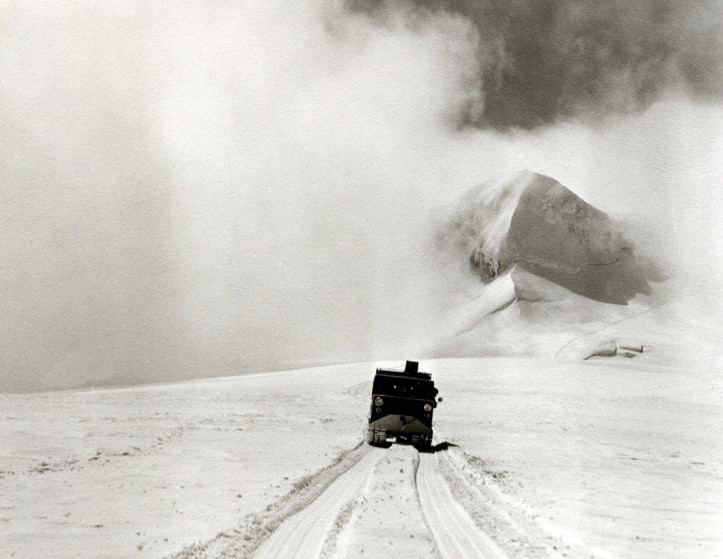
Once they were caught in a snowstorm and they were stuck inside the tent for three days, until only the tip of the tent could be seen from the glacier’s surface and they had to be dug out.
I asked my grandfather, “Weren’t you cold?”
“Cold?” he responded. “We were just married!”
I was about 11 when I asked, and found it hard to find a rational connection between marriage and being warm.
The glacier was unmapped and most of the peaks and places were still unnamed. The place where they were stuck in a blizzard has a name now. A low-rising hill from the glacial plateau in the northern part of the glacier is now called ‘The Bride’s Belly’. You can find it here on a map: Brúðarbunga, Kverkfjöll, 1781m, N64 35.378, W16 44.691.
Brúðarbunga is now registered as the 15th highest peak in Iceland. I asked my grandmother about the trip a few days ago. She is 94 now and is in really good shape. She is actually the same person she has always been. It is regarded as an insult in my family to refer to her as an old person. She is just ‘Hulda’ and we don’t use the word ern for her either. Ern is the word we use in Icelandic for an old person with an unusually clear mind.
I sat down with her to look at some maps and old pictures that my grandfather had taken. My grandmother had a nice scarf around her neck.
“Nice scarf,” I said to her.
“Thank you,” she said. “An old lady made it for me.”
“Old lady?” I asked.
Grandmother laughed. “Well she is actually ten years younger than myself.”
We went through the maps and old log books. We went through the diaries of that trip and the trips after that. They built mountain huts at the edge of the glacier and on the top. The idea was that they should become shelters for scientists; outposts to gather information about these last uncharted frontiers of Iceland.
After 1000 years of human habitation in Iceland, the country became covered by an invisible layer of stories. Every single farm, every hill, every mountain had a second meaning in history, folklore or literature. A rock was not just a rock; it had been used in a battle in the 1200s. A cliff was not just a cliff; it was the place where huldafolk (‘hidden people’) lived – invisible people, descendants of Eve’s unclean children. A farm was on the same place as the first farm was built, layers of history surrounding everything, everywhere. But the endless glaciers were a tabula rasa. A real blank sheet of paper, without stories or history, hardly mentioned in folklore or the Icelandic Sagas. It was theirs to apply the stories to the white infinite blankets of ice and snow.
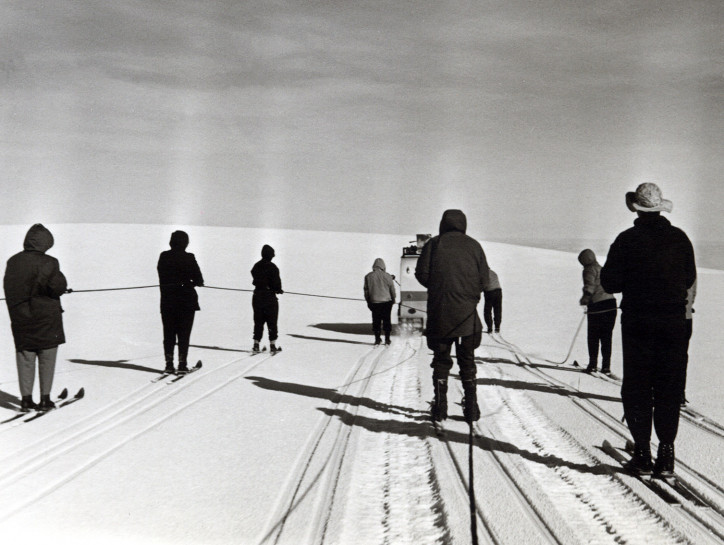
These trips became annual and are still today a vital part of the Icelandic Glacial Research Society. I asked my grandmother if she was never afraid in this hostile environment but she just laughed and said:
“It was so strange. I was never afraid. And we never got lost. If a storm hit us and we had no idea where we were, we would just wait. Maybe a day or two, then we would find our way when visibility returned. Every spring I would find this smell. A scent of a glacier. I can’t describe it, but I would feel it. And I can still feel it during the springtime. The smell of a glacier. I miss not going on these trips.”
When my grandparents were mapping the glacier, it existed in the context of eternity. It had always been there, as long as any man or documents could remember, and according to their best knowledge, it would always be there. My grandfather took a 16mm camera with him on the trip. Once I said that I wished he had filmed more of my grandmother. You could always film the glacier, but my grandmother at young age would be something more worthwhile documenting. If we now take the glacial data from 1956 onwards, and apply that to current global temperatures and future predictions, we will see that this great body of ice will vanish within the lifetime of someone born today, just as they become as old as my grandmother. Nature has left geological time and has started to change during a single human lifespan. We can calculate that the glacier is collapsing and will be only a fragment of its old self by the year 2120.
The Glacial Society has mapped the glacier floor. They have found invisible valleys and mountains that nobody has ever seen. You can look at these pictures and imagine these valleys in 200 years, now frozen but by then possibly nice rugged valleys with small scrubby bushes or green moss formations. If my descendants want to wonder about my grandmother’s travels and look at the old maps, they will have to imagine 400 metres of ice above them and all around them. And they will have to imagine a snowmobile travelling 400 metres above them and say: “If you draw a line between these peaks, that is the path your great-great-grandmother travelled.” We can take the documents of the Glacial Society and start naming hills and valleys. We will grieve the glacier, but they will see it as I saw the landscape while travelling in our Volvo Laplander. They will see blades of grass that will prove the miracle of life. They will see geothermal areas that had no name for people of my generation.
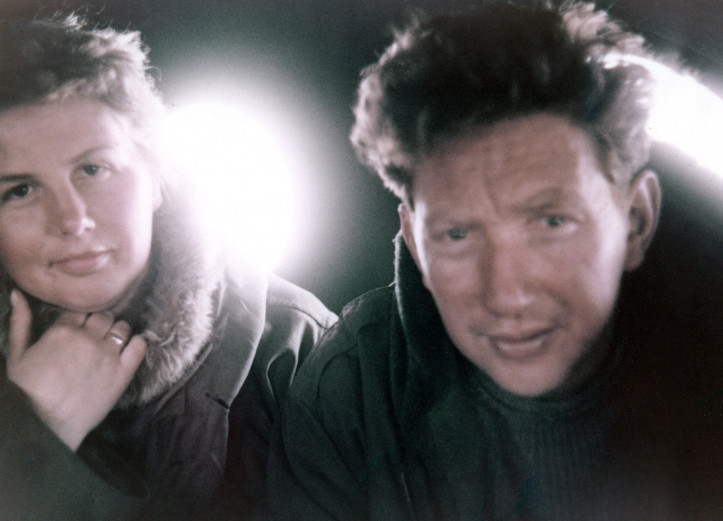
I have travelled parts of Vatnajökull myself, but I am far from being as adventurous as my grandmother. Travelling over Skeiðarárjökull, it is hard to believe that this vast, seemingly endless body of ice is vanishing. We travel through landscapes unlike anything I have seen before; over landscapes that looks like miles of turtles’ backs, through a forest of black pyramids, past cracks that moan and gurgle, past streams that fall into bottomless holes that remind me of the lair of some alien, snake-like creature. The thought of slipping and falling in, vanishing and getting stuck hundreds of metres below is harrowing. The black forest, sand that formerly had filled holes, now becoming pyramids, until we encounter something like a road, smooth and endless. After a day, you feel as if you are on the planet Solaris in the novel by Stanisław Lem. You try to interpret the forms you encounter; try to understand all these forms that almost look man made. A pothole here, a pyramid there, a highway here. It feels like the glacier is showing us what is killing it, from the pyramids to the highways. The glacier does not leave with dramatic noises or calving ice like we see in documentaries from the Arctic. The glacier vanishes softly, like a silent spring. It just melts, retreats slowly, silently, calmly, but its appearance is strangely dead, almost like a slain fish. It loses its glow, lies flat and lifeless and far up in the middle of the mountain. You see chunks of ice and a line showing where the glacier was just a few years ago. And you try to grasp this great mass that is gone, to understand it has just changed form. It has become ocean and it will rise slowly, like the silent spring, until a storm hits and knocks down doors and porches of beachfront properties.
•
I was writing about my grandparents’ trips when I got a strange phone call. I was invited to interview the Dalai Lama on his visit to Iceland. I was wondering what I could say to a person that has been reincarnated 14 times. It would have to be a very intelligent question. I was browsing through world history, religion, mythology – just anything looking for something, when I started to think about the strangest figure in Nordic mythology. According to Nordic mythology, the world started with a cow. It was a frozen cow, and from its udders came the four rivers that nourished the world. This myth sounds like some great misunderstanding: a frozen cow in the beginning of time makes no sense. Sounds like a whispering game that went wrong as the myth was passed down generation after generation. And the name of the cow is Auð-Humla. Auð means ‘wealth’ in Icelandic. Humla, I was not sure.
In Hindu scriptures, there is a mother earth cow Kamadhenu, and the foundations of that cow – her feet – are symbolized by the Himalayan mountains. You could say that the foundations of Kamadhenu are those mountains. And if you go to the Himalayas, you will find a district in Nepal called Humla. And if you follow the Great Himalayan Trail through Humla, you will come to Mount Kailash: the centre of the world according to Buddhists; the throne of Shiva according to Hindus. From this mountain come the four major rivers of Asia: the Indus, the Ganga, the Brahmaputra and the Sutlej. A bit further away you will find Gomukh, another source of the Ganga – one of the most holy places in India. Gomukh is a valley glacier and its name means ‘The Mouth of the Cow’.
I am not sure if there is a real connection that can be proven. But suddenly it was like it all came together: a glacier is a frozen cow. It keeps the water during the cold and rainy season. It releases milky white water full of silt and minerals when you need it the most. It can be all the water people have, the water that defines life and death for your crop or the real keeper of the groundwater level.
Hima in Sanskrit means ‘frost’. Auð-hima. ‘The Prosperity of Ice’. Still today we have two billion people that rely on this melting water; this source of life running from the Himalayas. During my interview, the Dalai Lama expressed his worries about the future of these glaciers. They were also retreating, and what would happen if up to 500 million people were met with water scarcity? Mythologically speaking, you could say that The Great Frozen Cow of Life and Prosperity is dying.
I started to feel that these issues were somehow beyond my comprehension. Like hearing a new word before it has been loaded with meaning. Like what the words ‘nuclear bomb’ might have meant to a person in the 1920s before any images or contemporary victims had been attached to them. I started to think how I was worried about a dam that was being built in Iceland, and the damage it would do. I was thinking how I could grasp that dam, but still not understand it while I was walking on land that would soon be drowned under 200 metres of water. That in a few years, I would follow an old map with my children and I would point at an island and say: “Imagine that this was a hill, surrounded by goose nests. Imagine a roaring river under the hill, a waterfall and a rainbow. A nice place on the other side to camp, full of crowberries.”
I remember how I might feel angry – like an activist – about this dam, but how I find it difficult to grasp or feel the great damage of the rising sea levels, warming temperatures and melting glaciers.
•
The old skaldic poets used a language in poetry that was saturated with Nordic mythology. To say ‘sky’ in a poem, you did not say sky; you said ‘the dwarf’s helmet’. To say ‘earth’, you did not say earth; you said ‘bride of Odin’. When the poets became Christian they were confronted with a problem. How do you talk about the creator of heaven and earth when the language forces you to talk about God – the creator of the dwarf’s helmet and Odin’s bride? It took decades to find new metaphors and a language with which they could speak about God, without being drenched in the old metaphors. Imagining the impact on 500 million people, imagining the glaciers covering 500,000 square kilometres of land, I feel that these issues are so large that I don’t really have a language to talk about them. It seems that there are no maps to navigate properly into this future. What I see as nature is becoming something we have never seen. But of course, I hope that what I see as destruction will eventually become something our descendants can love and cherish.

